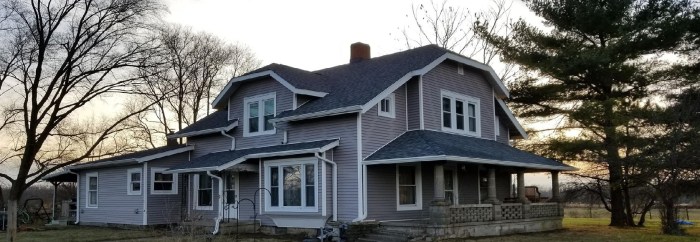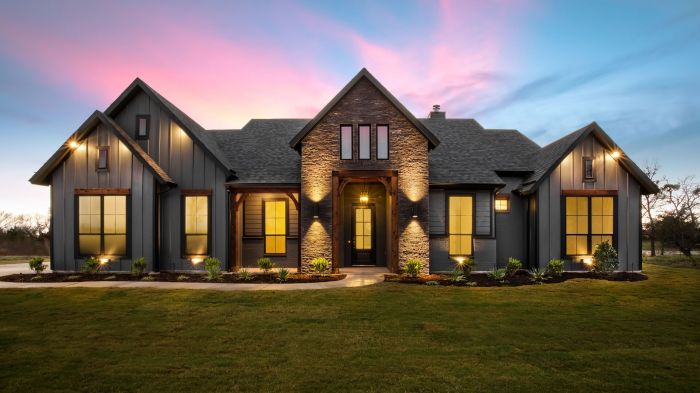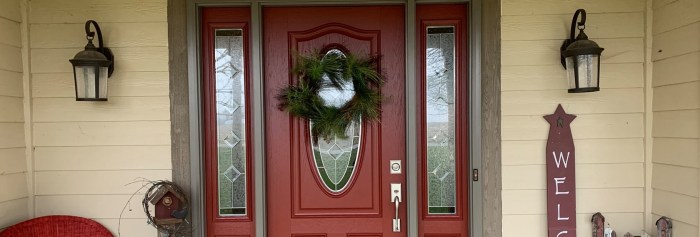Enhancing Properties: The Impact of Custom Exteriors
Delving into the world of custom exteriors, these unique features can truly transform the look and feel of any residential or commercial building. From personalized touches to aesthetic enhancements, custom exteriors play a crucial role in creating a distinctive appeal for any property.
Let's explore the fascinating realm of custom exteriors and how they can elevate the overall design of a building.
Overview of Custom Exteriors
Custom exteriors refer to the design, materials, and finishes used on the outside of residential or commercial buildings to create a unique and personalized look. These exteriors are tailored to the specific preferences and style of the property owner, making them stand out from typical, cookie-cutter designs.Custom exteriors can enhance the aesthetic appeal of a property by adding character, charm, and individuality.
For example, incorporating custom woodwork, stone accents, or unique color schemes can elevate the overall look of a building and create a lasting impression on visitors or potential buyers.The importance of custom exteriors lies in their ability to set a building apart from others in the neighborhood or market.
By investing in custom features like architectural details, landscaping, or exterior lighting, property owners can showcase their personal style and create a space that reflects their taste and personality. This not only adds value to the property but also enhances the overall curb appeal and visual impact of the building.
Materials Used in Custom Exteriors

When it comes to custom exteriors, the choice of materials plays a crucial role in the overall look, durability, and maintenance requirements of the exterior. Different materials offer varying levels of durability, maintenance needs, and environmental impact.
Common Materials Used in Custom Exteriors
- Wood: Wood is a popular choice for custom exteriors due to its natural beauty and versatility. However, it requires regular maintenance such as staining or painting to protect it from the elements.
- Vinyl: Vinyl is a low-maintenance option that is durable and resistant to rot and insects. It comes in a variety of colors and styles, making it a versatile choice for custom exteriors.
- Brick: Brick exteriors are known for their durability and classic appeal. They require minimal maintenance and can withstand harsh weather conditions.
- Stone: Stone exteriors offer a timeless and elegant look to custom homes. While they are durable, they can be costly to install and may require occasional cleaning and sealing.
Durability and Maintenance Requirements
- Wood: While wood offers a natural and warm aesthetic, it is prone to rot, insects, and moisture damage. Regular maintenance such as staining or painting is necessary to prolong its lifespan.
- Vinyl: Vinyl is a durable material that requires minimal maintenance. It is resistant to rot, insects, and fading, making it a low-maintenance option for custom exteriors.
- Brick: Brick exteriors are highly durable and require little maintenance. They can withstand extreme weather conditions and do not need to be repainted or refinished regularly.
- Stone: Stone exteriors are extremely durable and can last for decades with minimal maintenance. However, they may require occasional cleaning and sealing to maintain their appearance.
Environmental Impact
- Wood: While wood is a renewable resource, its production and treatment can have a negative impact on the environment. Opting for sustainably sourced wood can help reduce environmental harm.
- Vinyl: Vinyl production can have environmental implications due to the use of chemicals and energy-intensive manufacturing processes. However, its durability and low maintenance can contribute to long-term sustainability.
- Brick: Brick is a sustainable material that is made from natural clay and requires minimal processing. It is energy-efficient and can help regulate indoor temperatures, reducing the need for heating and cooling.
- Stone: The extraction and transportation of stone can have environmental consequences, but stone is a natural and long-lasting material that does not emit volatile organic compounds (VOCs) or other harmful substances.
Design Elements in Custom Exteriors

When it comes to custom exteriors, design elements play a crucial role in enhancing the overall aesthetics and functionality of a property. From color schemes to textures and architectural features, each element can be customized to reflect the owner's unique style and preferences.
Let's explore how these design elements can be harmoniously blended to create a cohesive and visually appealing exterior.
Color Schemes
Color schemes are an essential design element that can significantly impact the overall look of a property. Whether you prefer bold and vibrant colors or a more subdued palette, choosing the right colors can help create a cohesive and inviting exterior.
Consider the architectural style of your home and the surrounding environment when selecting a color scheme to ensure that it complements the overall aesthetic.
Textures
Textures add depth and visual interest to custom exteriors. By incorporating a mix of textures such as wood, stone, brick, or metal, you can create a dynamic and visually appealing facade. Textures can also help highlight architectural features and create contrast, adding visual intrigue to the exterior design.
Architectural Features
Architectural features such as columns, arches, gables, and trim details can enhance the character and charm of a property. These elements can be customized to reflect different architectural styles, from traditional to contemporary, allowing homeowners to infuse their personal taste into the design.
By carefully selecting and integrating architectural features, you can create a unique and stunning exterior that stands out.
Installation and Maintenance of Custom Exteriors

When it comes to custom exteriors, the installation process is crucial to ensure a flawless outcome. From preparation to construction and finishing touches, each step plays a vital role in creating a durable and visually appealing exterior.
Installation Process
Before the actual installation begins, thorough preparation is key. This involves assessing the area, making necessary repairs, and ensuring the surface is ready for the custom exterior. Once the preparation is complete, the construction phase starts, where the chosen materials are expertly installed to create the desired look.
Finally, finishing touches such as trim work and paint are added to enhance the overall appearance.
Importance of Maintenance
Regular maintenance is essential to preserve the longevity of custom exteriors. By keeping up with cleaning, inspections, and repairs, you can prevent damage and deterioration caused by weather elements, wear and tear, and other factors. This proactive approach not only maintains the appearance of the exterior but also ensures its functionality over time.
Best Practices for Maintenance
- Regularly inspect the exterior for any signs of damage or wear.
- Clean the exterior surfaces as needed to remove dirt, debris, and stains.
- Touch up paint or finishes to prevent fading or peeling.
- Address any repairs promptly to avoid further damage.
- Consider applying protective coatings or sealants to enhance durability.
Concluding Remarks
In conclusion, custom exteriors offer a myriad of possibilities to create a one-of-a-kind look for any building. By carefully selecting materials, incorporating design elements, and prioritizing maintenance, property owners can enjoy a lasting and visually appealing exterior. Embrace the world of custom exteriors and unlock the potential to make your property stand out from the rest.
Query Resolution
What are the benefits of choosing custom exteriors?
Custom exteriors allow property owners to create a unique and personalized look, enhancing the overall aesthetic appeal of the building.
How can different design elements be customized in custom exteriors?
Design elements such as color schemes, textures, and architectural features can be tailored to reflect the owner's style and preferences, adding a personal touch to the exterior.
What materials are commonly used in custom exteriors?
Materials like wood, vinyl, brick, and stone are frequently used in custom exteriors, each offering different durability and maintenance requirements.
Why is regular maintenance important for custom exteriors?
Regular maintenance is crucial to ensure the longevity and functionality of custom exteriors, preserving their appearance over time.